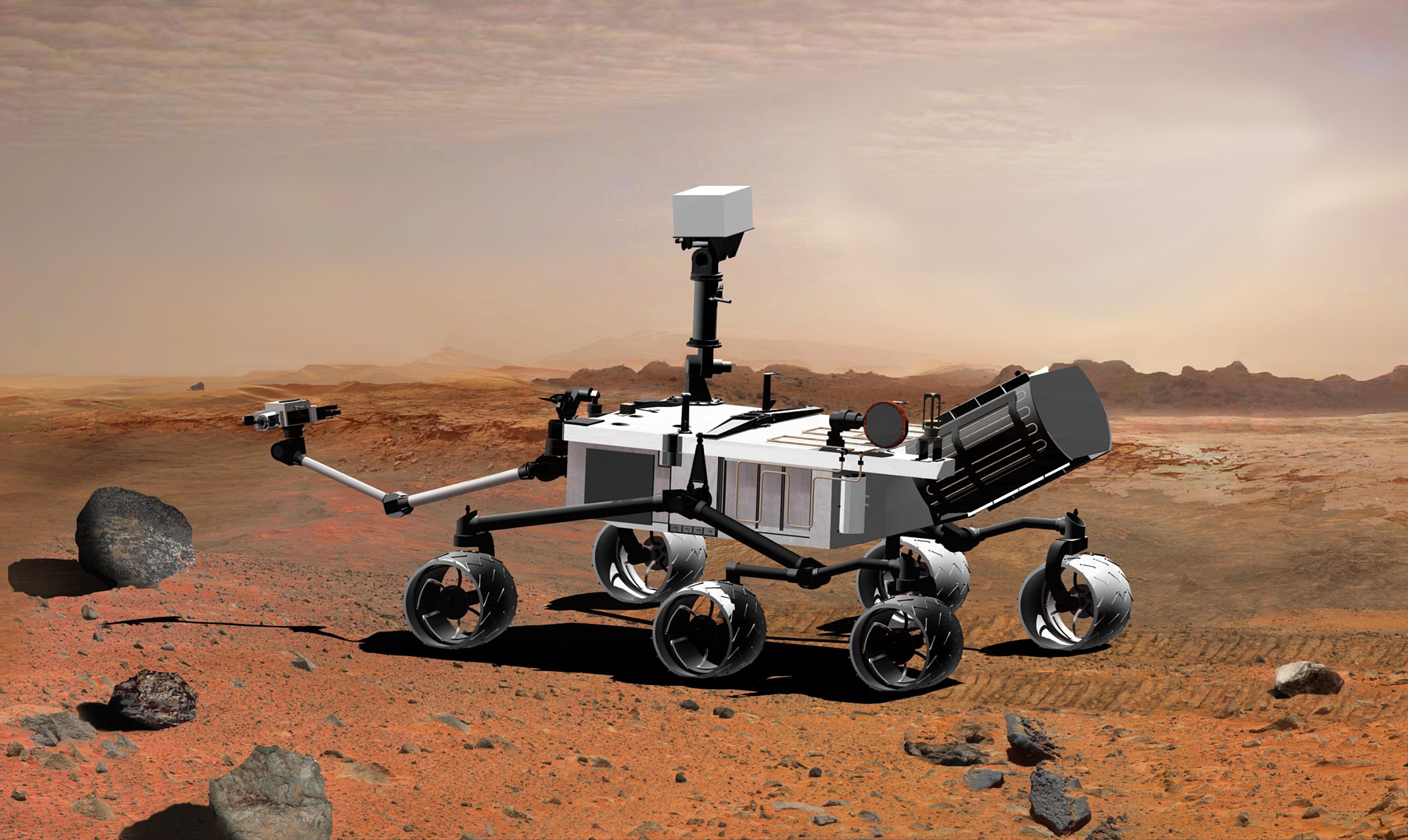Ryan Anderson • Sep 09, 2008
Last Year's MSL Landing Site Workshop: Day 2
This article originally appeared on Ryan Anderson's "The Martian Chronicles" blog and is reposted here with permission.
Today was a marathon of landing site presentations, ranging all over the martian globe, and targeting just about every potentially water-related feature on Mars. The day began with a continuation of the topic from yesterday: layered craters. Geologists love looking at layers because, like the pages in a history book, we can read them and learn about the planet's past. It gets tricky though, because layers can form as sediment settles out of a lake (good for life), but layers can also form in volcanic eruptions (not so good for life). The more compelling arguments for past habitability come from sites that have layers that coincide with evidence for water-bearing minerals.

After hearing about layered craters, we moved on to a set of presentations about sites in and around Meridiani Planum. Although this is the same region where the Opportunity rover is right now, saying that we shouldn't go back to Meridiani because we've "been there" is like saying that you've seen all of Europe after visiting Paris. Paris is nice, and has a lot to see, but Europe is a big, varied place. Meridiani has some great advantages: it has a lot of evidence for water-bearing minerals (clays and sulfates), it has lots of layered rocks exposed by erosion, and there are a lot of flat, safe-looking locations.
Of the sites in Meridiani, one in the eastern part of the region really stood out to me. It would land in the area of Meridiani with the largest amount of hydrated minerals as seen from orbit, in a very safe area, right on top of a huge stack of layers. Plus it is one of the only places on the planet where clay and sulfate minerals appear to be very close to each other. One of the new theories about the history of Mars is that clays formed when the planet was wet and habitable, and sulfates formed as it was drying out and getting less hospitable. We really want to find out what caused the change between the clay-dominated era and the sulfate-dominated era, so landing at a site that has some of both could help us figure that out.
After the Meridiani sites, there were a bunch of presentations proposing sites that would land in various parts of the gigantic canyon on Mars, Valles Marineris. If you placed it on Earth, Valles Marineris would stretch from California to New York, and its walls are nearly as tall as Mt. Everest. On the one hand, that makes it a really fascinating place to study, but that also makes it very difficult to find a safe place to land. I suspect that most of today's discussion about these sites was an intellectual exercise - the sites are excellent places to go, but will almost all require a mission with pinpoint accuracy when it comes to landing there safely.
The final round of sites proposed today was a grab-bag. A couple of the presenters took a shot-gun approach and talked about three or four sites in one presentation. This made it difficult to really assess whether the sites would be good places to land, because there was less detail about each individual site. In general, those sites didn't do well in the voting. Other presentations toward the end of the day talked about so-called "chaos" regions, where the ground has collapsed as vast amounts of subterranean water burst out and formed massive outflow channels. Still others proposed landing in the outflow channels themselves, or in locations where volcanic and water-formed rocks meet.
All in all it was a day full of really fascinating presentations. It was interesting to see the different degrees of candor in people's presentations. Some tended to gloss over the ambiguities in their proposed site, hoping to convince everyone that a water-related origin is the only explanation. Other presentations were brutally honest about their viability as a site, and in fact served more as public service announcements, reminding us of things to keep in mind when evaluating other sites. Of the sites discussed, some were clearly better than others, but I wouldn't say that there are any that I can say are sure to be among the finalists. I think that the group is doing a good job of asking the hard questions and really searching for sites that have multiple lines of evidence that point to past habitable conditions. Tomorrow should be very interesting as we hear about the rest of the proposed sites, and then go about the painful business of narrowing down to five top choices.
Support our core enterprises
Your support powers our mission to explore worlds, find life, and defend Earth. You make all the difference when you make a gift. Give today!
Donate

 Explore Worlds
Explore Worlds Find Life
Find Life Defend Earth
Defend Earth

